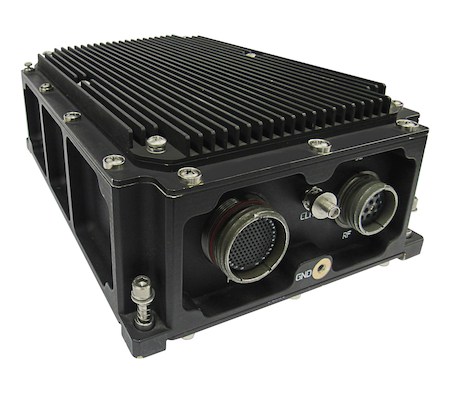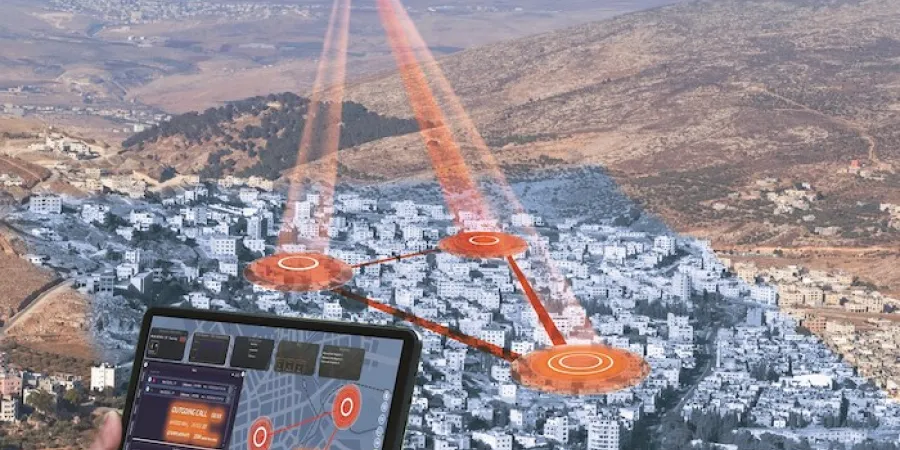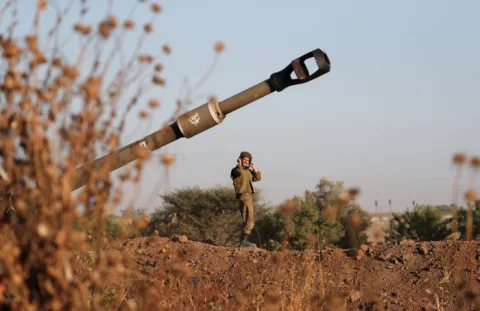Instantaneous Tactical Geolocation With ComDart's Revolutionary Antenna Technology
IAI subsidiary ELTA Systems has fielded the innovative geo-location system, addressing the need to provide forces with an easily deployed, reliable solution
IsraelDefense
|
03/01/2022
The ability to detect, track and classify hostile communications is a requisite intelligence capability that modern military forces must incorporate into their arsenals. However, legacy Electronic Support Measure/Communications Intelligence (ESM/COMINT) systems are based on traditional antenna arrays and use Angle of Arrival (AOA) or Direction finding (DF) techniques to locate emitters. While these techniques can determine the direction to the emitter, they do not inherently identify its location.
In order to geolocate the target, azimuth measurements must be intersected from multiple sensor platforms, which may impose an unattainable burden on tactical operations. Alternatively, a mobile sensor platform may geolocate the emitter using multiple DF detections, but this process is complex and may not be feasible in the event of short transmissions or a moving transmitter. Furthermore, traditional DF technologies require multiple and complex antennas, which can be challenging if the ESM sensor must be mounted on a compact platform such as an Unmanned Aerial Vehicle (UAV).
Addressing the need to provide forces with a geolocation solution that is easily deployed and provides quick and reliable performance in the tactical environment, IAI subsidiary ELTA Systems Ltd., the defense electronics subsidiary of IAI, Israel's largest aerospace and defense company, has fielded the innovative ELK-7065VU ComDart Compact V/UHF 3D RF Geo-Location System, utilizing the company's exclusive Vector Sensing Array (VSA) technology.
The VSA measures an accurate vector to the emitter – a three-dimensional arrow that points directly from the platform to the target. By calculating the point of intersection between this vector and a digital map of the terrain, an accurate geolocation is achieved. In comparison to AOA/DF antenna arrays, the VSA is considerably reduced in size and weight, allowing for installation on smaller platforms that cannot accommodate the legacy technologies.

ComDart instantaneously detects transmissions across the VHF and UHF spectrum and provides accurate geolocation of RF emitters. It provides tactical forces with instantaneous geolocation of adversary communications using a single aerial platform such as a UAV. "ComDart’s ability to immediately locate enemy communication transmissions from a single platform represents a breakthrough capability," said Adi Dulberg, Vice-President and General Manager of IAI/ELTA’s Intelligence, Communications and Electronic Warfare (EW) Division.
He adds: "In contrast to traditional COMINT systems, which employ antenna arrays, ComDart is a highly compact system using just a single antenna. As soon as someone presses the push-to-talk button, the system immediately locates them.” He continues, “The ease of deployment and immediate geolocation is the breakthrough. These advances make ComDart the first system with such capabilities and performance to be deployable by tactical forces.”
IAI/ELTA offers an extensive portfolio of high-performance and field-proven payloads on a wide variety of platforms. Platforms range from strategic ISR satellites, multi-mission aircraft, UAVs and ground systems. System solutions cover integrated EW (ESM/ECM), Radar, EO/IR, IMINT, Launch Detection Systems (LDS), SAR/GMTI, SIGINT, and cyber. This expertise in delivering game-changing, high-end technologies such as ComDart's VSA to customers worldwide is a key factor in IAI/ELTA's ability to offer class-leading solutions.
IAI subsidiary ELTA Systems has fielded the innovative geo-location system, addressing the need to provide forces with an easily deployed, reliable solution
The ability to detect, track and classify hostile communications is a requisite intelligence capability that modern military forces must incorporate into their arsenals. However, legacy Electronic Support Measure/Communications Intelligence (ESM/COMINT) systems are based on traditional antenna arrays and use Angle of Arrival (AOA) or Direction finding (DF) techniques to locate emitters. While these techniques can determine the direction to the emitter, they do not inherently identify its location.
In order to geolocate the target, azimuth measurements must be intersected from multiple sensor platforms, which may impose an unattainable burden on tactical operations. Alternatively, a mobile sensor platform may geolocate the emitter using multiple DF detections, but this process is complex and may not be feasible in the event of short transmissions or a moving transmitter. Furthermore, traditional DF technologies require multiple and complex antennas, which can be challenging if the ESM sensor must be mounted on a compact platform such as an Unmanned Aerial Vehicle (UAV).
Addressing the need to provide forces with a geolocation solution that is easily deployed and provides quick and reliable performance in the tactical environment, IAI subsidiary ELTA Systems Ltd., the defense electronics subsidiary of IAI, Israel's largest aerospace and defense company, has fielded the innovative ELK-7065VU ComDart Compact V/UHF 3D RF Geo-Location System, utilizing the company's exclusive Vector Sensing Array (VSA) technology.
The VSA measures an accurate vector to the emitter – a three-dimensional arrow that points directly from the platform to the target. By calculating the point of intersection between this vector and a digital map of the terrain, an accurate geolocation is achieved. In comparison to AOA/DF antenna arrays, the VSA is considerably reduced in size and weight, allowing for installation on smaller platforms that cannot accommodate the legacy technologies.

ComDart instantaneously detects transmissions across the VHF and UHF spectrum and provides accurate geolocation of RF emitters. It provides tactical forces with instantaneous geolocation of adversary communications using a single aerial platform such as a UAV. "ComDart’s ability to immediately locate enemy communication transmissions from a single platform represents a breakthrough capability," said Adi Dulberg, Vice-President and General Manager of IAI/ELTA’s Intelligence, Communications and Electronic Warfare (EW) Division.
He adds: "In contrast to traditional COMINT systems, which employ antenna arrays, ComDart is a highly compact system using just a single antenna. As soon as someone presses the push-to-talk button, the system immediately locates them.” He continues, “The ease of deployment and immediate geolocation is the breakthrough. These advances make ComDart the first system with such capabilities and performance to be deployable by tactical forces.”
IAI/ELTA offers an extensive portfolio of high-performance and field-proven payloads on a wide variety of platforms. Platforms range from strategic ISR satellites, multi-mission aircraft, UAVs and ground systems. System solutions cover integrated EW (ESM/ECM), Radar, EO/IR, IMINT, Launch Detection Systems (LDS), SAR/GMTI, SIGINT, and cyber. This expertise in delivering game-changing, high-end technologies such as ComDart's VSA to customers worldwide is a key factor in IAI/ELTA's ability to offer class-leading solutions.



